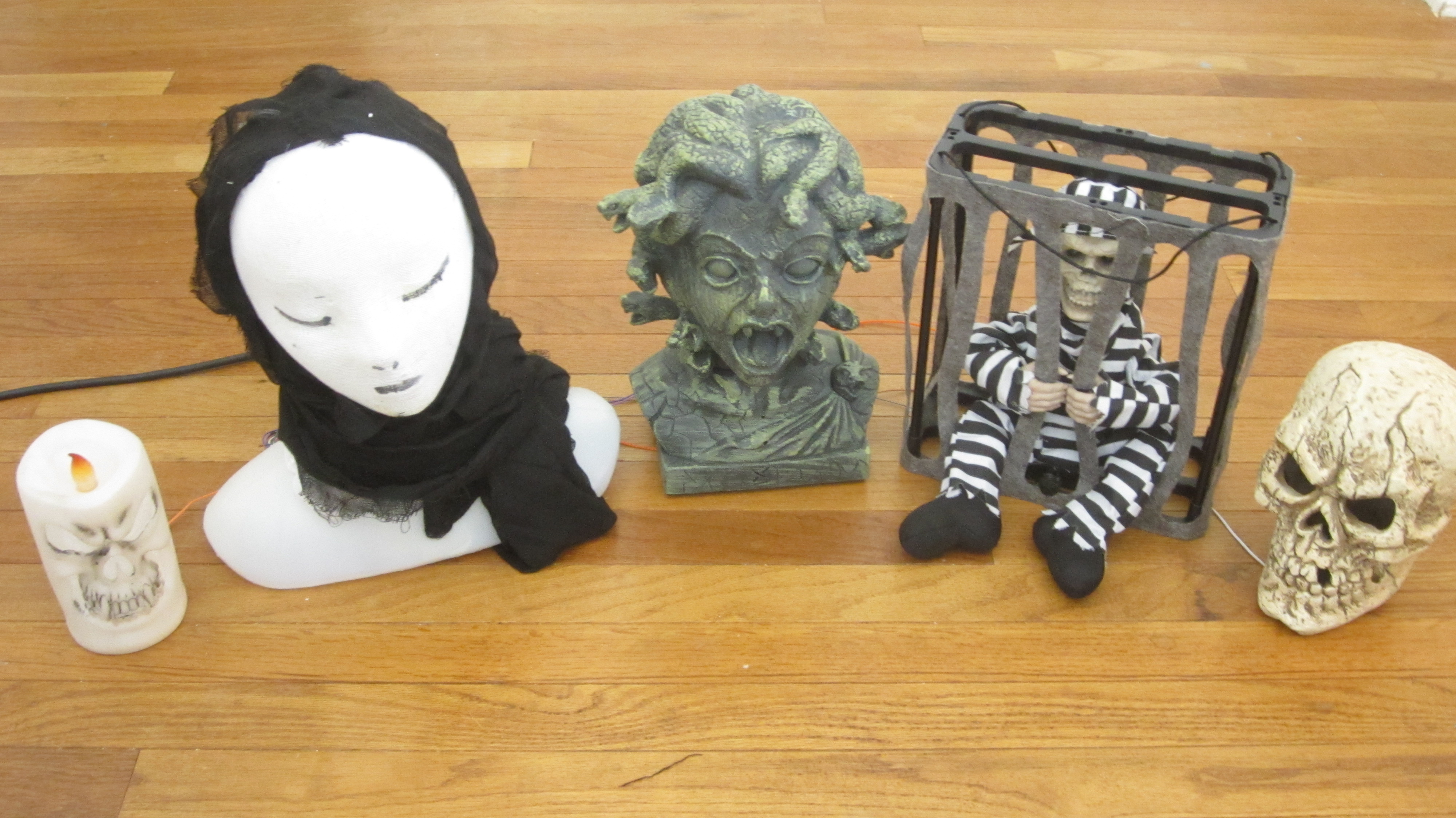
Animated Halloween props are a lot of fun. But the props that you buy at the store have some major limitations.
One problem is that each prop is activated by its own sensor, so it is difficult to get them to work together in unison. If the props are out of sync, the overall effect isn’t as scary.
Another problem is that the built-in “motion sensors” aren’t very effective. Most props are activated by a light sensor that detects the change in light when someone walks by. In order for them to work, they need light to be shining on them; they won’t work at all in the dark. They can also be falsely triggered if the lighting in the room changes.
So I worked out a system that lets you control all your animated Halloween props with a single microcontroller (such as an Arduino). This lets you choreograph exactly how and when each prop will turn on an off. It also lets you use external sensors that you can customize for your exact setup.
View this project on Instructables: instructables.com/id/Control-Your-Halloween-Decorations-With-Arduino/


